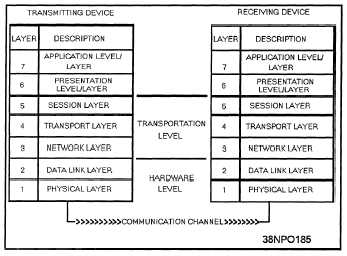Figure 8-1.—The OSI model showing the seven layers.
uses a simple point-to-point link, the software at the
higher level layers (say 5, 6, and 7) might be very
simple or possibly nonexistent. However, in a very
complex data communications system, all seven
software layers may be implemented. Although there
is no requirement for any hardware or software vendor
to adhere to the principles set forth in the OSI model,
there is a worldwide trend in the computer industry
toward acceptance and conformance to these
standards.
Ideally, if the hardware, network software,
application software, and cabling were all supplied by
the same manufacturer, there would be relatively few
problems for users to contend with when designing
and implementing a network. Everything would work
together rather smoothly. However, a computer
manufacturer’s architecture can make it difficult to
interconnect hardware offered by other competing
manufacturers or vendors. The protocols used by
communications devices are also highly complex and
are often completely different from one manufacturer
to another. Then there is the network software.
Usually, the network software from one LAN vendor
will not work with that of a competitor, neither will
the application programs. Even the cabling must be
selected for a specific local-area network.
HARDWARE LEVEL
and the data-link layer. These are concerned primarily
with the actual hardware used in a network.
Physical Layer
The physical layer is concerned with the
transmission of the unstructured raw bit stream over
a physical medium. It describes the electrical,
mechanical, and functional interfaces to the carrier.
The physical layer carries the signals for all the higher
layers as follows:
Voltages and pulse encoding of bits
M e d i a a n d m e d i a i n t e r f a c e ( c a b l e s ,
connectors, NIC, and so on)
Line discipline (full- or half-duplex)
Pin assignments
Data-Link Layer
The data-link layer provides error-free
transmission of information over the physical
medium. This allows the next higher layer to assume
virtually error-free transmission over the link. The
data-link layer is responsible forgetting data packaged
and onto the network cable. It manages the flow of
the data bit stream into and out of each network node
as follows:
Creates and recognizes frame boundaries
Checks received messages for integrity
Manages channel access and flow control
Ensures correct sequence of transmitted data
The data-link layer detects and, when possible,
corrects errors that occur in the physical layer without
using the functions of the upper layers. It also
provides flow-control techniques to ensure link-buffer
capacity is not exceeded.
The hardware level contains the first two layers of
the OSI reference model. They are the physical layer
8-5


